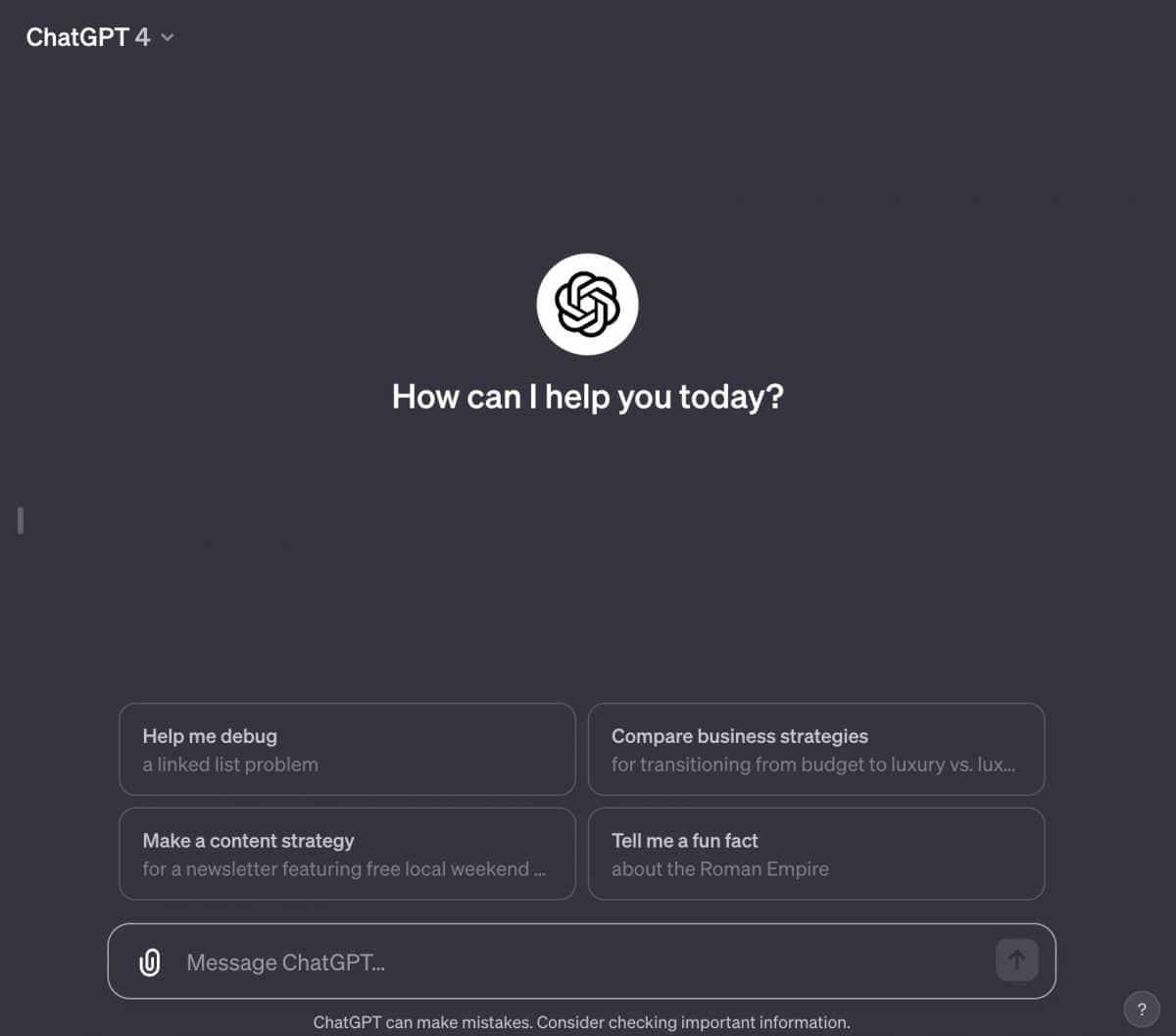ChatGPT can assist with generating ideas, content, and social media strategies by using a basic prompt. But only if you know how to say the right thing. This article digs into the basics of writing useful and effective ChatGPT prompts for social media. Plus, we’ll give you examples of ChatGPT prompts I’ve put to the test myself with some good results.
Understanding ChatGPT Prompting
Social media marketers first need to understand ChatGPT and how it functions before they begin ChatGPT prompting.
ChatGPT, developed by OpenAI, is a sophisticated large language model trained through a process known as unsupervised learning.
That process involves the model being trained on massive amounts of text datasets from the Internet. The model then analyzes the way words and phrases are used and structured in the training data to identify patterns. includes understanding syntax, grammar, and even stylistic elements of language.
Through that pattern recognition, the model can infer meaning and context. For example, it can discern that certain words have different meanings based on their use in a sentence.
In the case of ChatGPT, this unsupervised learning on a large scale enables it to generate text that is not only contextually relevant but also stylistically varied.
ChatGPT can mimic different writing styles, adapt to various tones, and even emulate specific content formats. All that makes it an incredibly versatile tool for applications like social media management.

How to start with ChatGPT prompts
How a prompt is structured significantly impacts the output. ChatGPT’s response is shaped by:
- The explicit information in the prompt: The direct content of your query or statement
- The implicit cues: Subtler indications of tone, style, or context inferred from the prompt
- The model’s training data: The vast body of text forms the basis of its language understanding and generation capabilities
Now, let’s explore the anatomy of a good prompt and how to tailor your ChatGPT prompts for optimal results.
Try Agorapulse for FREE right away!
How to Write Effective ChatGPT Prompts for Social Media
What makes a good prompt “good”? The following actions can help lay a solid foundation for a good response.
1. Define your objective
State your goal within the prompt. What are you trying to achieve? Being detailed here is crucial.
For example, do you want social media content ideas? Include the content format you’re looking for (video, text, or graphic), and also the social media platform (TikTok, Instagram, YouTube, LinkedIn, etc.)
Provide detailed and specific information. That way, you guide the model to generate content that more closely aligns with your intended topic, style, and tone.
2. Give some context
You need to provide ChatGPT with the relevant background information and details it needs to provide you with a relevant and accurate response. By adding in context, you help ChatGPT understand not just the “what” but the “how” and “why” of the prompt.
You can include the following elements in your prompt (or in the custom instructions) for better context:
- Target audience details: Include information about the demographic or psychographic characteristics of your audience. This helps tailor the response to their interests, behaviors, and preferences.
- Industry or niche: Mention your industry or niche to help generate more relevant and industry-specific responses. For instance, the tone and style for a tech audience will differ significantly than one for a fashion audience.
- Brand voice or style guidelines: If you want the content to align with your brand’s voice or adhere to specific style guidelines, include those within your prompt. You can try using different tones—professional, casual, authoritative—to see how it changes the results.
- Previous strategies or content: Briefly mention what strategies or content types have worked (or not worked) in the past. This provides a background for what might be more effective.
- Competitive landscape: Including information about competitors or industry trends can be useful, especially for prompts related to strategy and market analysis.
- Platform-specific requirements: If the content is for a specific social media platform, mention any relevant platform-specific guidelines or preferred content formats, like short-form videos for TikTok or image-focused posts for Instagram.
- Any limitations or constraints: Include any constraints such as budget, resources, or time, which are crucial for strategy-related prompts.
- Relevant data or metrics: If you have specific data or metrics that need to be considered or included in the response, mention them, or add any documents with that information into the chat so that ChatGPT can reference them before responding.
Learn more: 10 AI Uses for Marketers
3. Be clear
Detail and context is important, but clarity should not be sacrificed. Overly complicated or convoluted prompts can lead to responses similarly muddled.
The goal is to strike a balance between providing enough detail for specificity and maintaining clarity to ensure the model can process and respond effectively.
4. Use multi-part prompts
Having difficulty reaching that balance between detail and clarity? You can try using multi-part prompts. Just break up your prompts or tasks into smaller, more manageable pieces, so ChatGPT can easily provide a focused and relevant response.
For example, don’t ask for a full-fledged marketing campaign in one go. Instead, start with campaign themes, then content types, and so on.
5. Experiment, iterate, refine
Your first prompt might not hit the jackpot. And that’s OK. You now have an opportunity to experiment with different prompt structures. This could involve varying the length, the level of detail, or the type of request.
Such experimentation can reveal what works best for different types of content and objectives. Then simply refine and rephrase your prompts based on the responses you get.
Ultimately, a well-crafted prompt drives the model towards generating relevant and engaging content, and ensures that the output will fit seamlessly into your broader social media strategy.
In the next section, we’ll go over different use cases for ChatGPT in social media. Plus, these prompts for each one can help you can get started right away.
The following ChatGPT prompts have been designed (and tested) for various aspects of social media marketing and management.
15 Incredibly Useful ChatGPT Prompts for Social Media
1. Trend analysis
“Analyze the latest social media trends in [industry] between [date range] and suggest five unique content ideas that align with these trends.”
2. Hashtag generation
“Generate a list of 10 trending and relevant hashtags for a post about [specific topic or event] targeted at [specific audience].”
3. Engagement-boosting questions
“Create five engaging questions to post on [social media platform] about [topic], designed to spark conversation and encourage replies among [specific audience].”
4. Competitor analysis
“Analyze the social media strategy of [competitor] over the past three months and suggest three strategies we could adopt or improve upon.”
5. Campaign ideas
“Propose three creative social media campaign ideas for [upcoming product launch/event], including potential themes, key messages, and types of content.”
6. Audience persona development
“Create a detailed audience persona for our primary target audience on social media, including demographics, interests, online behavior, and content preferences.”
7. Content repurposing ideas
“Suggest five ways to repurpose our top-performing blog post [insert blog post link] into different types of social media content.”
8. Influencer collaboration
“Identify five influencers in [specific niche] with a following of [specified range] and propose unique collaboration ideas for each that align with our brand values.”
9. Social media crisis management
“Outline a step-by-step crisis response plan for potential negative feedback on social media regarding [specific issue or product].”
10. Video content strategy
“Develop a video content strategy for our Instagram and TikTok channels focusing on [specific theme or campaign], including types of videos, key messages, and posting frequency.”
11. User-generated content
“Propose a user-generated content campaign to increase engagement on [platform], including campaign mechanics, themes, and methods for encouraging participation.”
12. Performance analysis and improvement
“Analyze the performance of our last social media campaign [provide details] and suggest three strategies to improve engagement and reach for the next campaign.”
13. Event promotion
“Create a comprehensive social media promotion plan for our upcoming event [provide event details], including pre-event buzz, live updates, and post-event engagement.”
14. Chatbot conversation script
“Write a conversation script for a chatbot designed to engage users visiting our Facebook page, focusing on [product/service] inquiries and lead generation.
15. Seasonal campaign ideas
“Generate three campaign ideas for the upcoming [holiday/season], tailored to our brand voice and audience demographics, including potential hashtags and key visuals.”
Final Thoughts on ChatGPT Prompts for Social Media
ChatGPT prompt engineering is far more than a technical skill. It’s a strategic capability. It demands a deep understanding of how to use AI tools in a way that will be aligned with your brand’s marketing strategy and overall business objectives.
These days, where the Internet and social media platforms are being overwhelmed with the same generic AI content, your ability to ask the right questions—the right prompts—will set your brand apart.
![Featured image of How to Write Effective ChatGPT Prompts [Step by Step Guide + Examples] ChatGPT Prompts](https://static1.agorapulse.com/blog/wp-content/uploads/sites/2/2023/12/ChatGTP-Prompts-for-Social-Media-Blogpost-Header-1-992x420.jpg)




